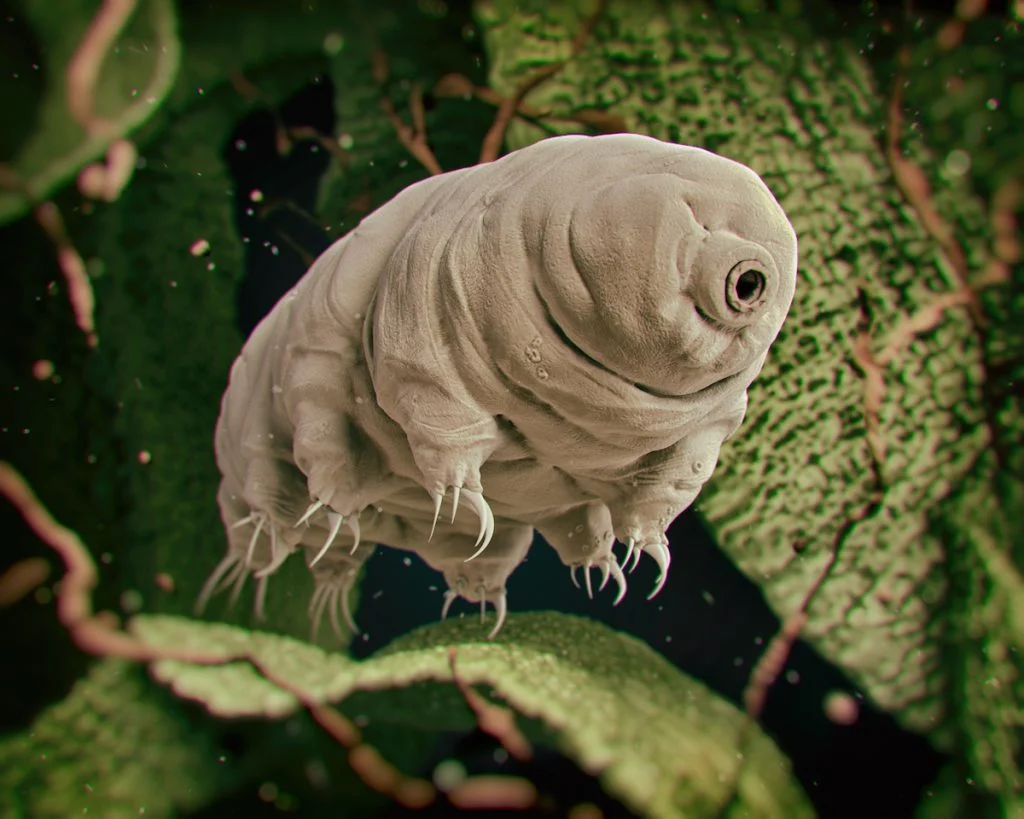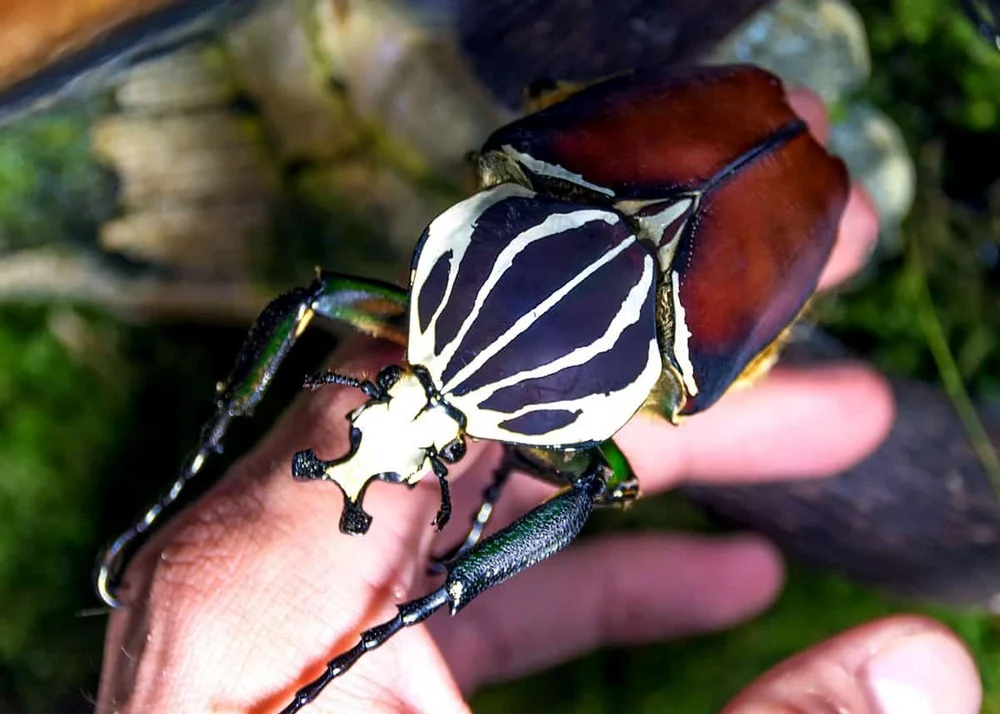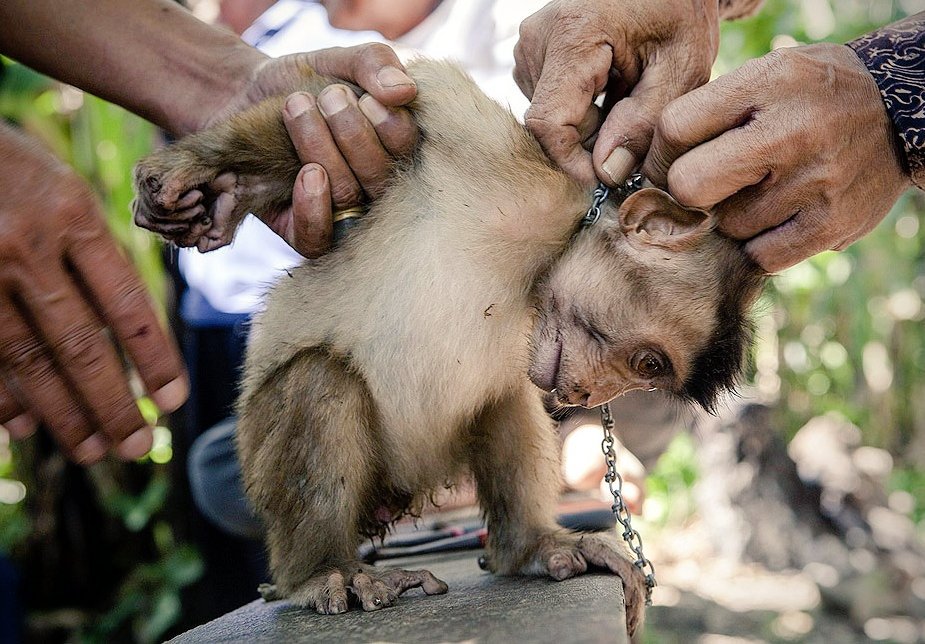Tardigrades, also often called “water bears,” are microscopic creatures that can survive in almost any environment. It is known that scientists managed to bring tardigrades back to life after 30 years of deep freezing. Being extremophiles, tardigrades shut down their metabolism and survive in harsh environments for very long periods. Tardigrades can withstand pressure comparable to an asteroid falling on Earth, so an emergency landing, like the one that happened on the Moon, is nothing for them. These creatures are theoretically capable of living on the Moon for decades. Fascinating, isn’t it?
Here are some more extreme facts about the hardiest creatures on our planet.
1. Tardigrades were first discovered in 1773 by a German pastor named Johann August Goetze. In 1776, the Italian biologist Lazzaro Spallanzani gave it the Latin name Tardigrada, which means “walking slowly.”
2. Since 1778, more than 1150 species of tardigrades have been discovered.

3. Tardigrade babies are born with a full set of adult cells. They do not grow by cell division. Their cells simply increase in size.
4. Tardigrades have been living on Earth for about 530 million years.
5. Tardigrades are tiny, microscopic animals with segmented bodies. They reach about 0.5 to 1 mm in length. They have four pairs of legs, each with 4-8 claws resembling bear claws. For this feature, they are often called “water bears” or “moss piglets,” as they are often found in moss.

6. These water-dwelling creatures live all over the world in the most extreme places, such as the Antarctic ice, in the ocean depths of up to 4000 meters, high in the Himalayas at an altitude of 6000 meters, on tree trunks, on moss, in soil, on the beach and anywhere else. All these water bears need is a bit of humidity.
7. Most often, tardigrades feed on bacteria, plants, and even other tardigrades. They penetrate individual cells of their prey, sucking out its contents to obtain nutrients. Inside their weird-looking mouth, they have sharp dagger-like teeth that they use to pierce other living organisms and algae.

8. When tardigrades have enough food and water to support basic functions, they go through a natural life cycle that rarely lasts more than 2.5 years. However, these water bears can live much longer if they enter a state of cryptobiosis when environmental conditions become unbearable. Contrary to popular belief, tardigrades do not live forever. Stress from freezing, radiation, and the high temperature still affect their physiology.
9. Scientists froze them down to -200 °C, and they were able to survive for several days. Then they cooled the tiny dudes down to -272 °C (which is 1 degree above absolute zero), and they still lived for several minutes.

10. In extremely cold environments, tardigrades reduce their water level from 85 percent to 3 percent. This is one of the main survival strategies of this amazing creature, as the water expands when frozen. If they didn’t dehydrate themselves in cold conditions, the water in their body would expand and tear them apart.
11. Still unimpressed? Let’s blast them with radiation! Scientists have discovered that the lethal dose of gamma rays for tardigrades is 5000 Gy, and the lethal dose of heavy ions is 6200 Gy. For us humans, 5-10 Gy is more than enough.

12. Tardigrades can survive in the most unfavorable environment — space. In a 2007 experiment, tardigrades were sent into space dehydrated and exposed to solar radiation for ten days. They were returned to Earth and got a nice hot bath. Half an hour later, the tardigrades were as lively as they were before, and they could produce healthy offspring in the future.
13. Although they are incredibly resilient creatures, tardigrades are completely harmless to humans. You have probably eaten them many times as they love to live in water and can end up on lettuce or vegetables. But don’t worry, they are no match for our stomach juice.





